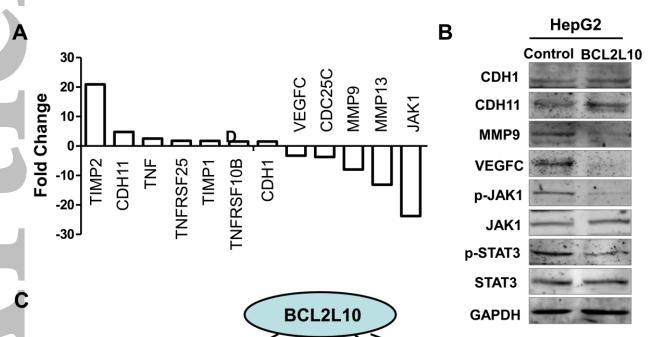CDH11 Antibody - #DF3523
| Product: | CDH11 Antibody |
| Catalog: | DF3523 |
| Description: | Rabbit polyclonal antibody to CDH11 |
| Application: | WB IF/ICC |
| Cited expt.: | WB, IF/ICC |
| Reactivity: | Human, Mouse |
| Prediction: | Pig, Bovine, Horse, Sheep, Rabbit, Dog, Chicken |
| Mol.Wt.: | 80,100kD; 88kD(Calculated). |
| Uniprot: | P55287 |
| RRID: | AB_2835743 |
Related Downloads
Protocols
Product Info
*The optimal dilutions should be determined by the end user. For optimal experimental results, antibody reuse is not recommended.
*Tips:
WB: For western blot detection of denatured protein samples. IHC: For immunohistochemical detection of paraffin sections (IHC-p) or frozen sections (IHC-f) of tissue samples. IF/ICC: For immunofluorescence detection of cell samples. ELISA(peptide): For ELISA detection of antigenic peptide.
Cite Format: Affinity Biosciences Cat# DF3523, RRID:AB_2835743.
Fold/Unfold
CAD11; CAD11_HUMAN; Cadherin 11; Cadherin 11 type 2; Cadherin 11 type 2 OB cadherin (osteoblast); Cadherin-11; Cdh11; CDHOB; OB; OB-cadherin; OBcadherin; OSF-4; OSF4; Osteoblast cadherin;
Immunogens
A synthesized peptide derived from human CDH11, corresponding to a region within the internal amino acids.
Expressed mainly in brain but also found in other tissues. Expressed in neuroblasts.
- P55287 CAD11_HUMAN:
- Protein BLAST With
- NCBI/
- ExPASy/
- Uniprot
MKENYCLQAALVCLGMLCHSHAFAPERRGHLRPSFHGHHEKGKEGQVLQRSKRGWVWNQFFVIEEYTGPDPVLVGRLHSDIDSGDGNIKYILSGEGAGTIFVIDDKSGNIHATKTLDREERAQYTLMAQAVDRDTNRPLEPPSEFIVKVQDINDNPPEFLHETYHANVPERSNVGTSVIQVTASDADDPTYGNSAKLVYSILEGQPYFSVEAQTGIIRTALPNMDREAKEEYHVVIQAKDMGGHMGGLSGTTKVTITLTDVNDNPPKFPQSVYQMSVSEAAVPGEEVGRVKAKDPDIGENGLVTYNIVDGDGMESFEITTDYETQEGVIKLKKPVDFETKRAYSLKVEAANVHIDPKFISNGPFKDTVTVKISVEDADEPPMFLAPSYIHEVQENAAAGTVVGRVHAKDPDAANSPIRYSIDRHTDLDRFFTINPEDGFIKTTKPLDREETAWLNITVFAAEIHNRHQEAKVPVAIRVLDVNDNAPKFAAPYEGFICESDQTKPLSNQPIVTISADDKDDTANGPRFIFSLPPEIIHNPNFTVRDNRDNTAGVYARRGGFSRQKQDLYLLPIVISDGGIPPMSSTNTLTIKVCGCDVNGALLSCNAEAYILNAGLSTGALIAILACIVILLVIVVLFVTLRRQKKEPLIVFEEEDVRENIITYDDEGGGEEDTEAFDIATLQNPDGINGFIPRKDIKPEYQYMPRPGLRPAPNSVDVDDFINTRIQEADNDPTAPPYDSIQIYGYEGRGSVAGSLSSLESATTDSDLDYDYLQNWGPRFKKLADLYGSKDTFDDDS
Predictions
Score>80(red) has high confidence and is suggested to be used for WB detection. *The prediction model is mainly based on the alignment of immunogen sequences, the results are for reference only, not as the basis of quality assurance.
High(score>80) Medium(80>score>50) Low(score<50) No confidence
Research Backgrounds
Cadherins are calcium-dependent cell adhesion proteins. They preferentially interact with themselves in a homophilic manner in connecting cells; cadherins may thus contribute to the sorting of heterogeneous cell types.
Cell membrane>Single-pass type I membrane protein.
Expressed mainly in brain but also found in other tissues. Expressed in neuroblasts.
Three calcium ions are usually bound at the interface of each cadherin domain and rigidify the connections, imparting a strong curvature to the full-length ectodomain.
References
Application: IF/ICC Species: Mouse Sample: lung tissues
Application: WB Species: Mouse Sample: lung tissues
Application: WB Species: human Sample: HepG2
Restrictive clause
Affinity Biosciences tests all products strictly. Citations are provided as a resource for additional applications that have not been validated by Affinity Biosciences. Please choose the appropriate format for each application and consult Materials and Methods sections for additional details about the use of any product in these publications.
For Research Use Only.
Not for use in diagnostic or therapeutic procedures. Not for resale. Not for distribution without written consent. Affinity Biosciences will not be held responsible for patent infringement or other violations that may occur with the use of our products. Affinity Biosciences, Affinity Biosciences Logo and all other trademarks are the property of Affinity Biosciences LTD.



